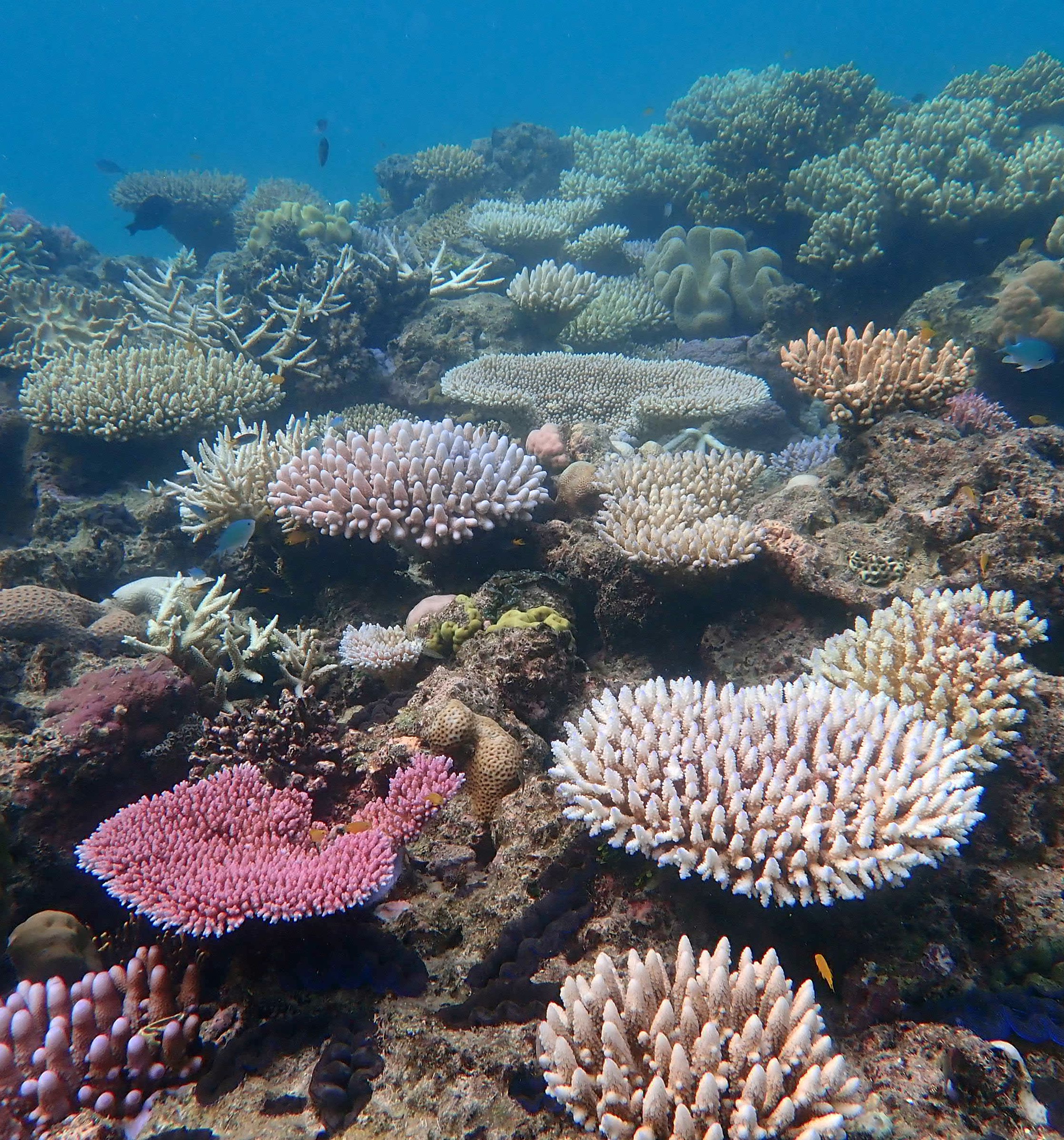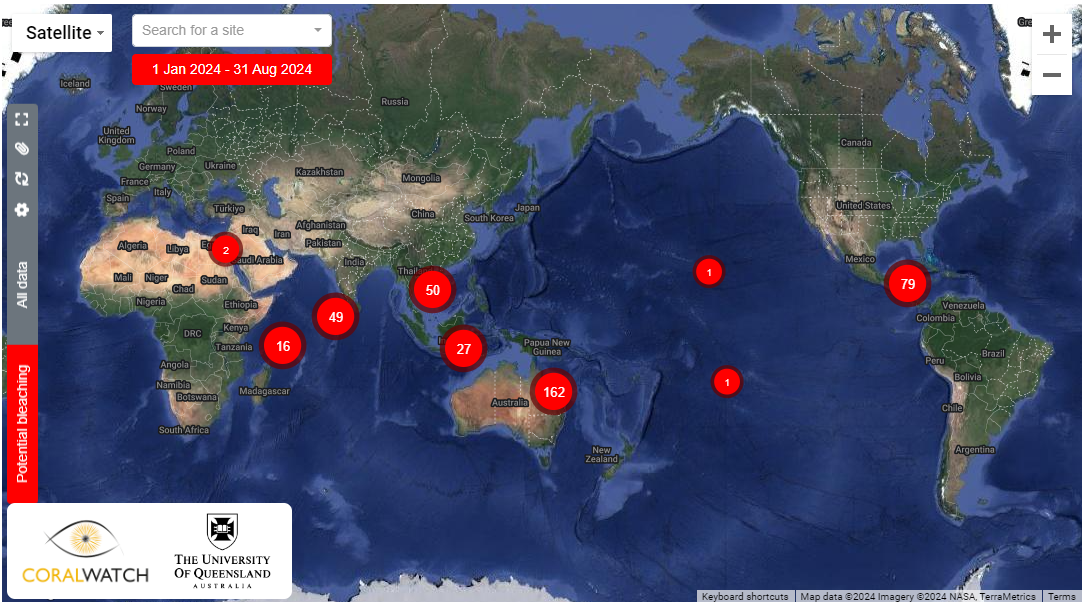Interactive map update and lessons learned from the 4th mass global bleaching event
At the start of the year, CoralWatch launched an interactive data map to provide better information about the location of bleaching events to assist in real-time conservation, education, and management efforts.
Throughout the year, in what has become the 4th mass global bleaching event, CoralWatch citizen scientists have been actively collecting and reporting CoralHealth data. This data has unveiled interesting and important trends that indicate the onset of a bleaching event as well as patterns of reef recovery in some areas.
The bleaching event also provided us with an opportunity to review our methods for processing and classifying data. Previously, we had relied on average colour score metrics to identify bleached reefs. However, photos and data collected by citizen scientists during the current global bleaching event have indicated that this measure was not conveying the complete story. Due to the differing stress tolerances of various coral species, a high variation in colour is likely to occur during the onset of and recovery from a bleaching event, such as that shown in this recent survey from Taiwan. When scores are averaged across a survey, the values may appear relatively high, obscuring important variation within the survey. Consequently, bleaching events could only be identified once most of the corals had become completely bleached and the average colour score dropped to a value below the threshold of 2.1.
To aid in the early detection of potentially bleaching reefs, we have introduced a new detection method based on the frequency of recorded colours. If 20% or more of the recorded colour scores are 1 – i.e. white, the survey will be flagged as potentially bleached. Incorporating this additional rule will enable us to identify the beginning of potential bleaching events as well as monitor reef recovery. Our new potential bleaching map synthesizes this data to illustrate where potential bleaching events are happening and track changes in coral health over time.
These changes can be viewed on our interactive map. We hope that these changes will provide practitioners with a real-time evidence base to inform management decisions and welcome feedback from the community on these changes.




